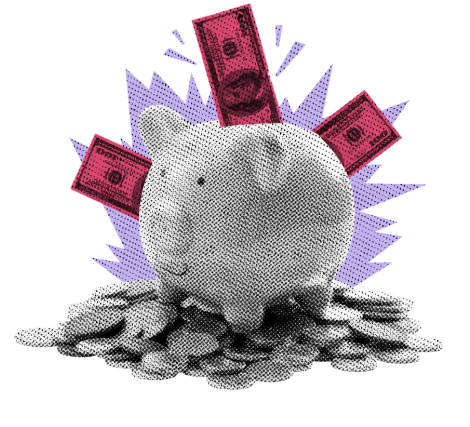
Stocks had a mixed close yesterday after being flooded by positive economic and earnings data. As candidates close in on election day investors are starting to wonder what all the campaign promises, IF KEPT, would cost the economy, rightly so.
There’s no stopping us. Do you remember when you used to have to get in your car, hop a bus, or brave a hot, crowded subway to buy a pair of socks? I don’t know about you, but in those days, affordability and budget were not the only factors involved in my purchase decisions, no, I also factored in the pain of getting to the retail store. Clearly today, at least one of those factors is no longer a thing. You can have a fresh pair of socks delivered to your doorstep before your dinner gets cold by simply clicking the BUY button on your phone. It is that easy. Could that be the reason why consumers continue to almost single-handedly hold up the economy? You have to admit, that may be a factor.
Yesterday, the US Census Bureau released its Retail Sales figure for September, and it came in above expectations and the prior month. Let’s try to understand why it is that consumers have become the little engine that could. Side note: “The Little Engine That Could,” for my cherished non-US readers AND my millennial++ readers, is a children’s book from the 1930s about perseverance under tough circumstances. Like the little blue engine that, against all odds, gets the job done in the end, consumers, facing a steep hill of inflation, growing unemployment, and high interest rates… get the job done.
Ok, so we determined that easy shopping could be a factor. Let’s talk about the other two factors I mentioned above, budget and prices. On budget, wage growth is supposed to walk in lockstep with inflation. If prices are going up, employees demand higher wages. We all know about this and how it can cause a spiral of inflation, because as employers have to pay more for labor, they increase prices, thus confounding the inflation that caused the problem in the first place. Believe me, economists and the Fed are very concerned… rather, WERE very concerned about this theoretical, apocalyptic event. Thankfully, it didn’t happen. Wages did rise in recent years. Starting in 2015, wage growth started to trend upward through the start of the pandemic. It then spiked briefly in 2020 when employers were willing to pay anything to get workers on the job in the darkest days of COVID. After the 2020 spike, it continued to trend upward, peaking in 2022. Wage growth trended downward since 2022 with its last reading of +4% year over year.
Considering that inflation is around +2.4%, workers seem to have the slight upper hand with their wages growing +1.6% faster than prices, though that wasn’t always the case. When CPI peaked at +9.1% in 2022, wage growth was only +5.4%. Ok, so is that the reason why consumers keep consuming? Well, that may be part of it, but that can’t account for the fact consumption growth NEVER FALTERED but for 2 quarters at the beginning of the pandemic (Q1 an Q2 of 2020). Even through inflation, consumption growth stayed positive and appeared to be completely unaffected. So, I guess, while consumers are concerned about prices, they still manage to get out and consume. I am not saying that prices do not have an effect on demand, but perhaps price elasticity (or demand sensitivity to price changes) is less elastic than in the past. That still leaves us with the unanswered question of budget.

Wait, it’s coming to me. How can someone spend what they don’t have? Your answer is in the following chart. Check it out and then follow me to the close.

Could this have something to do with it? Never mind the total amount that is now at $5.1 trillion. Just look at the slope of the green line! It has pretty much doubled since 2012! Even when interest rates spiked and cost of credit went up, credit’s rate of growth slowed, but only slightly. Do you remember when you did decide to brave the elements and travel to the store to buy the socks? If you were paying with your credit card, you had to fish it out of your wallet and the cashier would have to swipe it (or take an impression of it lol)? That was annoying. Today, we only have to enter our credit card information once! Shopping is as simple as point and click. Point, click… repeat… … er, repeat. Do you know where the largest monthly Retail Sales growth came from in Thursday’s release? It was not socks, nope, it was from Food Services. I will leave you with one final chart. This is a chart that shows total annual orders delivered from DoorDash. That is some pretty healthy growth. Prices? No problem. Budget? No problem. Having to move any muscle while sitting on the couch watching Netflix, other than your thumb? NO PROBLEM.
YESTERDAY’S MARKETS

NEXT UP
- Housing Starts (Sept) is expected to have slipped by -0.4% after growing by +9.6% in August.
- Building Permits (Sept) may have declined by -0.7% after climbing by +4.6% in the prior period.
- Fed speakers today: Bostic, Kashkari, and Waller.
- Next week: Lots of earnings, including the first of the Mag-7. Additionally, we will get Leading Economic Index, flash PMIs, regional Fed reports, more housing numbers, Durable Goods Orders, and University of Michigan Sentiment. Check back in on Monday for your weekly earnings and economic calendars.
- This morning, Regions Financial, Comerica, and Ally Financial all beat on EPS and Revenues, while Schlumberger, Proctor & Gamble, and American Express came up short.
.png)

